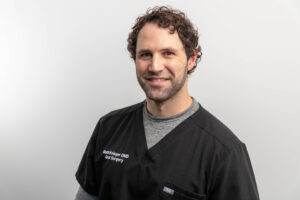Archived Newsletter Re-Post.
The AOX Newsletter • January 2024 #2
In a recent article titled Breaking Down The Math: Why AOX Efficiency Is More Important Than You Think, I highlighted the math behind the ways in which efficiency directly impacts our patients, our practice, and ourselves.
I wanted to expound on one area that is, naturally so, of interest to most surgeons. This is the financial impact that efficiency directly has on you as a surgeon. I also want to explain how I personally have shifted my mindset in this area to think of my income as an hourly rate.
First, let’s briefly revisit the math. To illustrate my point, I am going to use an example with Surgeon A whose arch time to completion is 60 minutes and Surgeon B whose arch time to completion is 90 minutes. In order to keep the math simple, let’s assume a reimbursement or “profit” of $2000/arch. This will of course vary depending on many factors, including how much is charged per arch, how you fabricate your prosthetic, and whether you are an employee or practice owner.
For the sake of this example, I am assuming a contracted surgeon, hired to focus on All-On-X surgery for a given practice. This may or may not be your case, but you can still appreciate the take home message.
Let’s take a look at how each surgeon’s efficiency impacts their paycheck and their hourly rate.
Surgeon A:
- Arch Time to Completion: 60 minutes
- Arches per Month: 18
- Monthly Reimbursement: 18 arches x $2000/arch = $36,000/month
- Days Worked: ~6 days per month & 3 arches cut per day
- Additional Office Hours (Consults/Paperwork etc): 2.5 Hours/Day Worked
- Total Hours Worked: (60 min x 18 arches) + (2.5 Hours x 6 Days) = 33 Hours
- Hourly Rate: $1,090.91/Hour
Surgeon B:
- Arch Time to Completion: 90 minutes
- Arches per Month: 18
- Monthly Reimbursement: 18 arches x $2000/arch = $36,000/month
- Days Worked: ~6 days per month & 3 arches cut per day
- Additional Office Hours (Consults/Paperwork etc): 2.5 Hours/Day Worked
- Total Hours Worked: (90 min x 18 arches) + (2.5 Hours x 6 Days) = 42 Hours
- Hourly Rate: $857.14/Hour
Now, if we assume both of these surgeons are cutting arches of similar difficulty and producing similar quality, all appears equal based on their monthly paycheck of $36,000.
But here’s where efficiency is really powerful. Surgeon A is actual getting paid ~$233.51/hour more than Surgeon B. Surgeon A is also making over $1000/hour while surgeon B is not yet knocking at that door.
Okay, but does this really matter?
Well, to me it does. And I think it should to you too.
Early on in my career I could not grasp this concept and thought only in terms of what was my total income. However, as I’ve progressed in life I’ve realized the immeasurable value of time. It is the one thing we cannot buy and yet the one thing of which we seem to always want more.
As a result, I have started to view my income in terms of time. I look at what I make per hour in addition to my overall income. I want to know what I am earning in exchange for the amount of time that I am providing. I also want to work to increase my hourly rate, so that as I age, I can work less, but potentially earn an even higher income.
This is nothing magical.
A simple shift in thinking.
A reminder that efficiency has real value.
Matthew Krieger DMD
“Time is really the only capital that any human being has, and the only thing he can’t afford to lose.”
Thomas Edison
Q & A with Dr. K

“What height of MUA’s do you normally use?”
When selecting an MUA, I am looking for an abutment tall enough to extend slightly beyond the crest of the gingival tissue, but also not so large that it eats up prosthetic space.
I utilize 2.5mm MUA’s approximately 95% of the time for straight, 17, and 30 degree abutments.
There are rare occasions where I will use a 1.5mm MUA. I almost NEVER use a 3.5mm abutment. If the tissue is truly that thick, I attempt to thin the tissue, rather than increase abutment height.
When I use a 45 degree abutment, I prefer a 1.5mm height. This is because the 45 degree abutment (at least with Neodent) is inherently taller. The 1.5mm/45 degree MUA matches closely with a 2.5mm height for the other selected multi-unit abutments.
Archived newsletters are released on a delayed timeline, a few months after the original publication. If you would like to receive these newsletters in real time please sign up here.


Pingback: 5 Reasons Practitioners Get Frustrated with Full-Arch Surgery - AOX Surgery